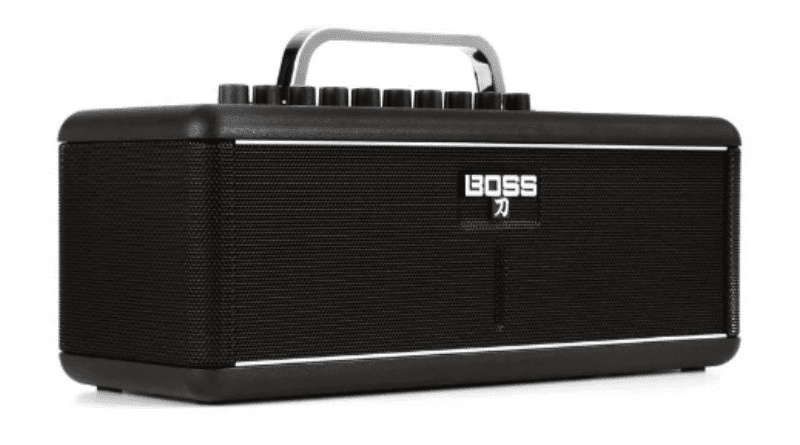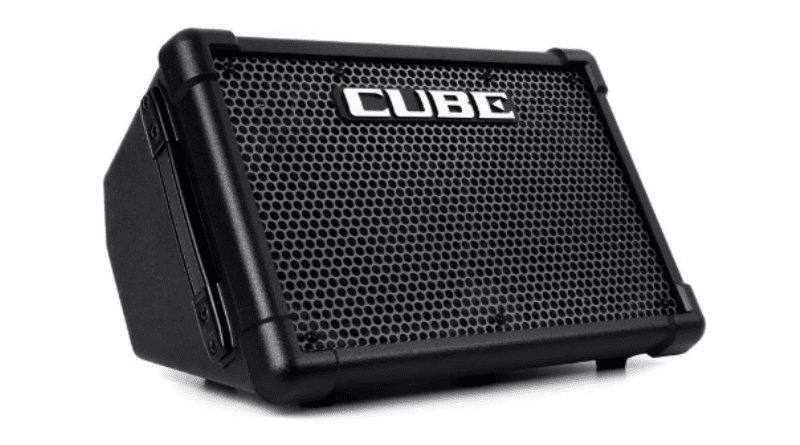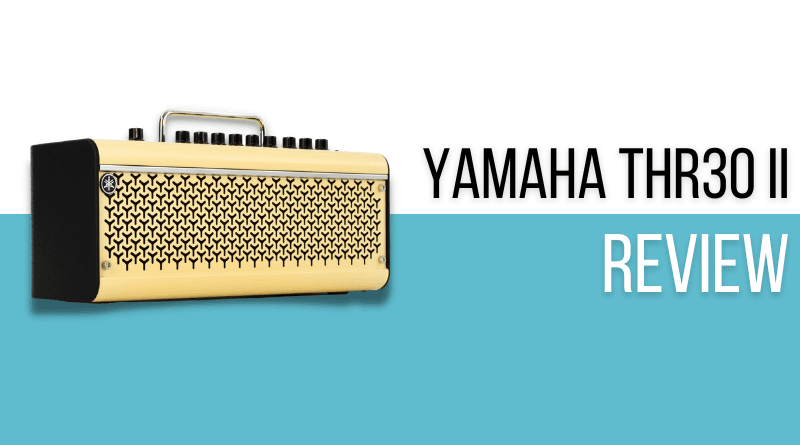The Yamaha THR30II is one of the most successful amp products ever launched by Yamaha, and the THR series itself is now in its 11th year of production – no mean feat in the revolving door world of guitar gear we currently live in.
Desktop amps like this have remained popular due to their form factor and feature set, but we found ourselves wondering whether or not this stalwart model still holds up against newer competition?
In this KillerGuitarRigs Review, we took a deep dive into the Yamaha THR30II. We focused specifically on its features, and its build and sound quality. Keep on reading to see if this (almost) classic Yamaha amp is still worth buying in 2022.
Read more about our review process.
Contents
Who Is This For?
The Yamaha THR30 II is larger than its counterparts the THR10 and the THR5, but it’s still very much a desktop combo amp. It’s a good choice for all players, from day 1 beginner through to seasoned pros. Beginners will find its compact size, portability, and strong low volume performance to be attractive features, while advanced players will likely get a ton of use from the modeling functionality, the FX, and the USB interface.
Appearance / Features / Controls
If you’re familiar with the THR series, the design of the flagship 30 watt model will be very familiar to you. It features the same aluminum body with “Y” (presumably standing for Yamaha) cutouts for the grille, and a fun orange glow that gradually lights up to look like hot tubes while you play.
Out of the box it was loaded with 15 different guitar amp voicings, which is a big step up over the 8 settings on the 10 watt version. In addition to these, it also had 3 acoustic models, 3 flat voicings, and even 3 bass voicings. This opens up the THR30II to a huge range of prospective players, and definitely added to the versatility.
On top of the array of amp voicings, it also came with an impressive selection of FX to choose from, including Chorus, Flanger, Phaser, Tremolo, Echo, Echo/Rev, Spring Reverb, Hall Reverb, Compressor, and even a Noise Gate.
The FX were accessed via a pair of rotary dials, which we found very easy to use. Should you want to modify the parameters of the effects, you can do so in the companion app and download your new settings to the THR30II. Unlike the smaller models, the app connects to the amp via bluetooth, which is exceptionally convenient for smartphone users, although it can still connect over USB if you’d prefer.
There were two 3.5” speakers delivering stereo sound, which worked particularly well with the modulation FX. The speaker balance was excellent, and for smaller units, they handled the bass frequencies exceptionally well.
As for power, it was able to be powered via an AC adapter, or on its own internal, rechargeable battery, which is something of a game changer for an amp of this size.
Performance/Sound
The tones we got from the THR30II were really fantastic. The slightly larger speakers made a huge difference when compared to the smaller models, with a more open, airy sound that came across more like a real guitar amp than a bluetooth speaker.
We started with the clean setting, which gave us some fantastic glassy tones and incredible headroom. Even with the volume maxed it stayed clean, making it a great setting for anybody looking to use external pedals or use the USB interface functionality to record.
For a mild overdriven tone, crunch was our favorite voicing. It sounded a lot like a Fender Blues Jr on the verge of breakup, and was perfect for light rock and blues. Like the clean setting, we got the same level of overdrive across the whole volume range, making it great for bedroom level practice.
If you’re looking for heavier distortion, the Brit Hi setting is where you’ll feel most at home. It gave us fairly heavily distorted vintage Marshall tones with ear pleasing breakup, all while retaining clarity.
We got a chance to test out the acoustic setting, and found it to be perfectly flat – just what you want in an acoustic amp – no additional coloration which could impact the natural character of the guitar. Speaking of flat, the THR30II even had a Flat voicing, which was perfect for use as a studio monitor when recording.
The built in effects selection was pretty robust, and having so much choice really makes this a complete rig for the average guitarist. Having stereo speakers enabled us to get the most out of the effects, particularly those on the modulation dial.
Other Amps to Consider
If you’re not quite sold on the Yamaha THR30II, you’ll be pleased to know that there are still some excellent alternative options out there. Here are a couple of our favorites.
Boss Katana Air 20/30

The Boss Katana Air 20/30 is billed as the world’s first completely wireless guitar amplifier – not only does it not require an AC adapter, but it also comes complete with a wireless transceiver to allow you to play your guitar wirelessly, too. It features the usual excellent Boss Katana modeling technology, and delivers 20 watts of power on batteries, or 30 when plugged in on AC power.
Roland Cube Street

If the Yamaha THR30II doesn’t have enough power for you, but you still need something highly portable, then the Roland Cube Street might be just what you need. It boasts 50 watts of power, pushed through twin 8” speakers. It offers a much fuller sound profile than the Yamaha, but it does sacrifice aesthetics. It does benefit from some modeling features, and can even function as a micro PA system.
Final Thoughts on the Yamaha THR30II
Considering its age the Yamaha THR30II still manages to keep up with much newer models. Its looks have aged well, and the build quality is still amongst the best you’ll find anywhere in this category of amps. The modeling and FX functions are excellent, and the overall sound quality is seriously impressive. We think it works well for a number of applications, from bedroom practice or jamming with friends, all the way through to street performances.
So, to answer the question posed at the beginning of this review – no, we don’t think it’s getting long in the tooth – quite the opposite, in fact. On many fronts, including aesthetics, and battery functionality, it even exceeded the capabilities of its newer competition.



The THR30ii was released about 3 years ago. Not ten years ago.
Hi Max! Appreciate the clarification – the original THR series amps came out in 2011/2012, but you’re right, the 30w didn’t come out until 2019. We had read a Guitar World article that stated Yamaha were celebrating the 10th anniversary of the THR30ii with two new colors, but they also fudged it. Thanks!